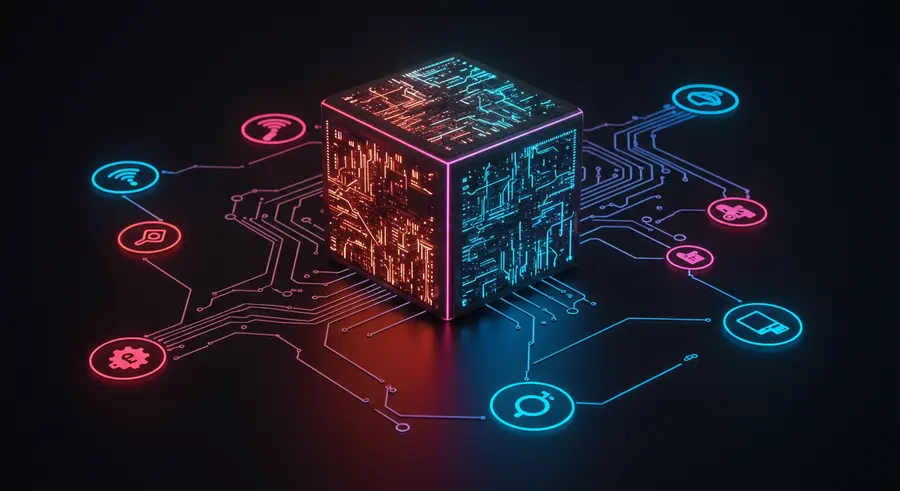Appearance

Welcome, tech enthusiasts! 👋 Today, we're diving deep into a topic that's fundamentally changing how we process, analyze, and act on data: Edge Computing. You might have heard the buzz, but what exactly is this "edge revolution," and how is it reshaping industries as we know them? Let's unravel this fascinating concept, complete with examples and insights!
What is Edge Computing, and Why Now? 🤔
In an increasingly connected world, data is generated everywhere – from smart factories and autonomous vehicles to wearable devices and smart homes. Traditionally, this vast amount of data would be sent to a centralized cloud or data center for processing. While the cloud offers immense power, this centralized approach can introduce latency, consume significant bandwidth, and raise privacy concerns, especially for real-time applications.
Edge computing brings computation and data storage closer to the source of data generation, literally "to the edge" of the network. Imagine data being processed right where it's created, rather than traveling long distances. This paradigm shift isn't new, but its widespread adoption is driven by several factors:
- Proliferation of IoT Devices: Billions of interconnected devices are continuously generating data.
- Need for Real-Time Processing: Applications like autonomous driving, augmented reality, and critical industrial control systems demand immediate responses.
- Bandwidth Constraints & Cost: Transmitting all raw data to the cloud can be expensive and inefficient.
- Data Privacy & Security: Keeping sensitive data closer to its origin can enhance privacy and reduce exposure.
The Power of Proximity: Key Benefits of Edge Computing 🚀
The advantages of processing data at the edge are profound and far-reaching:
- Lower Latency & Faster Response Times: This is perhaps the most critical benefit. By eliminating the round trip to the cloud, edge computing enables near real-time decision-making. Think of an autonomous vehicle needing to react instantly to an obstacle or a smart factory preventing equipment failure in milliseconds.
- Reduced Bandwidth Usage & Costs: Instead of sending massive volumes of raw data to the cloud, only aggregated insights or critical alerts are transmitted. This significantly reduces network congestion and data transfer costs.
- Enhanced Reliability & Offline Capabilities: Edge devices can continue operating and processing data even if connectivity to the central cloud is interrupted, ensuring continuous operations for critical systems.
- Improved Data Security & Privacy: Processing sensitive data locally at the edge can reduce its exposure to external threats, aligning with data sovereignty and privacy regulations.
- Scalability & Efficiency: Edge deployments can be scaled out geographically to meet localized demands, optimizing resource utilization.
Reshaping Industries: Real-World Impact 🌍
Edge computing is not just a theoretical concept; it's actively transforming various sectors:
1. Manufacturing & Industry 4.0 🏭
In smart factories, edge computing is a game-changer for predictive maintenance and quality control. Sensors on machinery generate vast amounts of data. Processing this data at the edge allows for:
- Real-time anomaly detection: Identifying unusual vibrations or temperature changes in machinery before a failure occurs, preventing costly downtime.
- Optimized production: Adjusting production parameters instantly based on real-time data from the assembly line, improving efficiency and reducing waste.
- Enhanced worker safety: Monitoring conditions and equipment in hazardous environments, providing immediate alerts.
2. Healthcare & Smart Hospitals 🏥
Edge computing can revolutionize patient care and hospital operations:
- Real-time patient monitoring: Wearable devices and bedside sensors can analyze vital signs at the edge, triggering immediate alerts for medical staff in critical situations.
- Accelerated medical imaging analysis: Processing large medical image files (like X-rays or MRIs) at the edge can speed up diagnosis, allowing doctors to view results faster.
- Asset tracking & management: Locating medical equipment and personnel instantly within a hospital, improving operational efficiency.
3. Retail & Smart Stores 🛍️
For retailers, edge computing offers insights and personalized experiences:
- Inventory management: Real-time tracking of stock levels on shelves, automatically reordering popular items and minimizing waste.
- Personalized customer experiences: Analyzing customer behavior in-store (anonymously, of course) to offer targeted promotions or guide them to relevant products.
- Loss prevention: Identifying suspicious activities in real-time through video analytics at the edge.
4. Smart Cities & Public Safety 🏙️
Edge computing plays a crucial role in creating safer and more efficient urban environments:
- Traffic management: Optimizing traffic light timings based on real-time vehicle flow data, reducing congestion and pollution.
- Public safety: Analyzing video feeds from street cameras at the edge to detect incidents, send alerts to emergency services, or identify unusual crowd behavior.
- Environmental monitoring: Deploying edge devices to monitor air quality, water levels, or noise pollution in real-time.
Looking Ahead: Challenges and the Future 🔭
While the benefits are clear, implementing edge computing comes with its own set of challenges, including managing distributed infrastructure, ensuring robust security at the edge, and developing new applications tailored for this environment. However, as hardware becomes more powerful and software tools mature, the "edge revolution" is only just beginning. We can expect more intelligent, autonomous, and responsive systems to emerge, powered by the distributed intelligence of edge computing.
For more information on the practical applications and benefits, check out our detailed guide on Use Cases and Benefits of Edge Computing.
Stay curious, and happy coding! ✨